In 1965, just seven years after Japanese artist Yayoi Kusama moved to New York, her installation "Infinity Mirror Room -- Phalli's Field" opened at Richard Castellane Gallery. It was, simply speaking, an enclosed room, about 25 square meters wide, with walls measuring in at just over eight feet tall.
Yet the mirrored panels arranged throughout the room disoriented the space, making it a claustrophobic cavern one moment, an infinite kaleidoscope the next. The floor was covered with hundreds of soft red and white fabric-covered protuberances, phallic pillows psychosexual and playful. Teeming with red and white polka dots, the soft tubers tangle to form a three-dimensional floor that's both comforting and threatening.
Fifty years later, Kusama's Infinity Mirror Rooms continue to be among the most popular attractions at major museums and galleries around the world. "Fireflies on the Water" lit up the Whitney in 2012, "The Souls of Millions of Light Years Away" is currently drawing obscene lines at The Broad in Los Angeles, and a mirror-laden Kusama retrospective titled "In Infinity" has taken over Cophenhagen's Louisiana Museum of Modern Art.
The contemporary manifestations of Kusama's works have remained relatively constant -- the dizzying sense of limited infinity, the uncanny proliferation of the viewer in the space, the dissolution of boundaries between self and other, the sensation of slipping into another world for a matter of mere minutes. There is, however, one major distinction. In the 1960s, participants in Kusama's installation weren't carrying cell phones. And they weren't taking selfies.
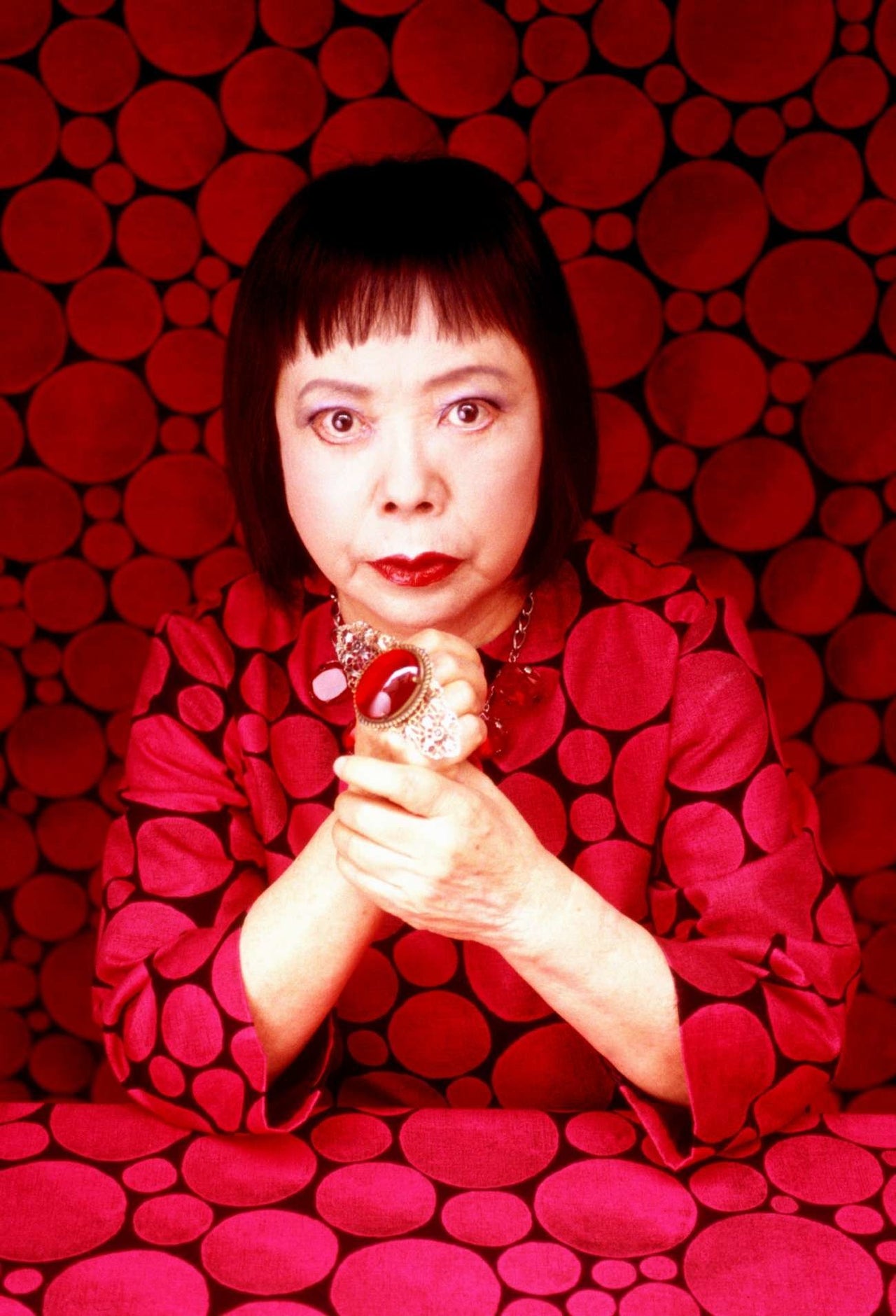
"Selfie nation: NYC goes inside Yayoi Kusama’s Infinity Mirrored Room," said Time Out New York. "We Went to the Yayoi Kusama Selfie Chamber," reported Paddy Johnson. "Yayoi Kusama’s New Installation Makes For Great Selfies," observed Art Report. "Two things are certain: long lines and lots of selfies," declared LA Magazine upon The Broad's opening.
With 1965's "Infinity Mirror Room -- Phalli's Field," Kusama innovated the concept of artwork as immersive environment, with the viewer as participant, willingly or unwillingly tossed into a sublime sea of repetition without beginning or end. She also invented the selfie-happy installation, though perhaps she didn't realize it.
Today, the list of installations asking to be hashtagged runs deep. There's Random International's "Rain Room," Chris Burden's "Urban Light," Pearlfisher's adult ball pit, to name a few. But Kusama's installations, particularly, deserve to be photographed, with their infinite mirrored surfaces and hallucinatory aesthetic. It's hard not to answer the urge to immortalize yourself in the space, with the space, as the space.
"Do yourself a favor," Susan Michals wrote in her review of Kusama's piece at The Broad. "Don't take your phone. By the time you attempt to get the perfect selfie, time will be up and you'll have done yourself a terrible disservice." Given the immense popularity of Kusama's works, many museums have instituted time limits, from 30 seconds to two minutes, for each visitor to experience the work individually. An awkward experience inevitably ensues, with such limited time to fumble for your phone, get the perfect shot and still, you know, experience the art and stuff.
But is Michals, in her dismissal of the near ubiquitous desire to capture an #artselfie in Kusama's sacred space, overlooking something crucial about the work that begs to be photographed?
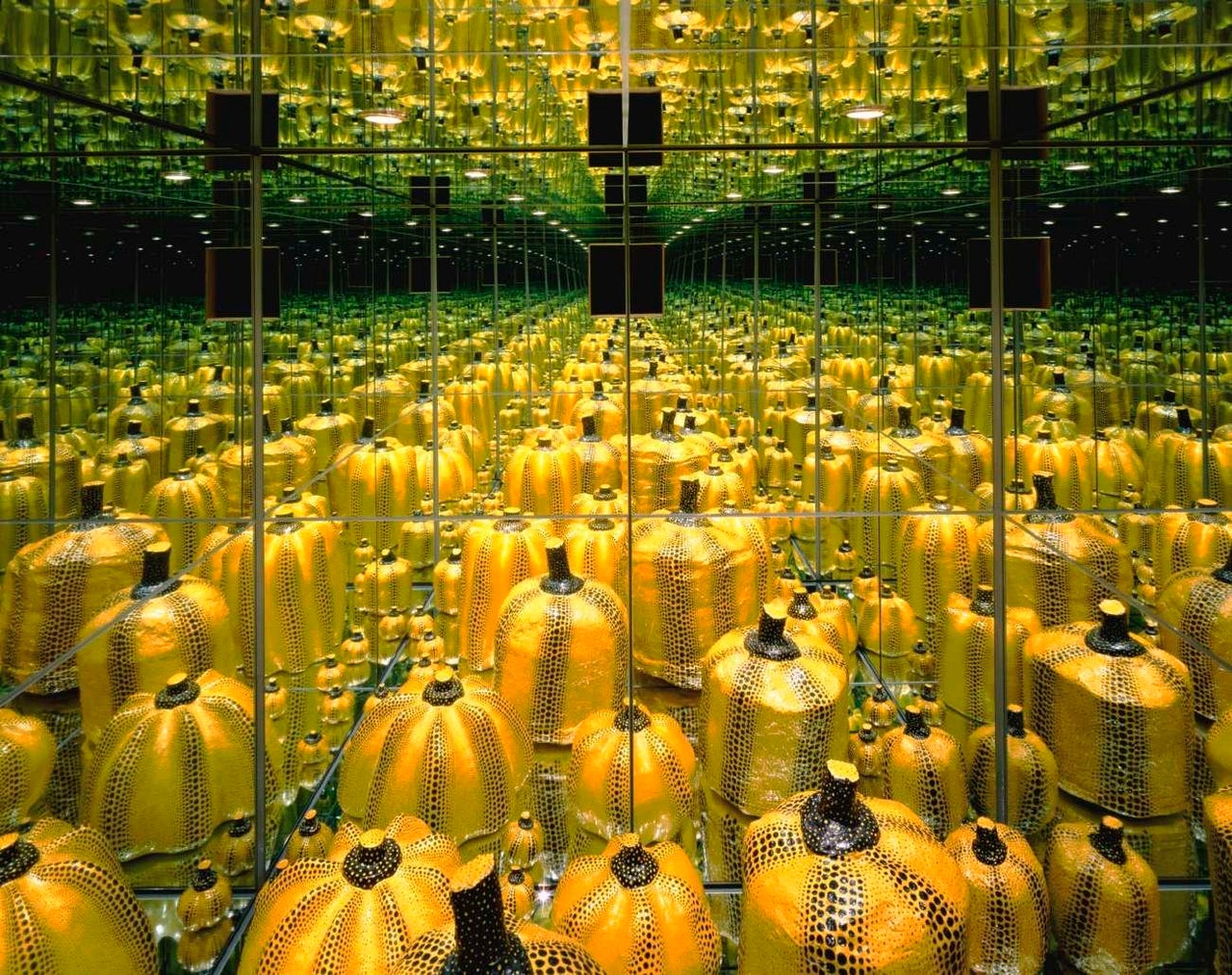
Most of Kusama's work, throughout her life, revolved obsessively around the single concept of self-obliteration. The artist grew up afflicted by extreme hallucinations and anxiety, and turned to art to relieve the incessant suffering. "I would cover a canvas with nets," Kusama writes in her autobiography Infinity Net, "then continue painting them on the table, on the floor and finally on my own body. As I repeated this process over and over again, the nets began to expand to infinity. I forgot about myself as they enveloped me, clinging to my arms and legs and clothes and filling the entire room."
This hungry repetition, that expanded indiscriminately over ceiling, floor, furniture and body, collapsed boundaries in its wake. Foreground and background, self and other, art and life, subject and object -- everything converges on a single plane, a plane to be blanketed with polka dots.
Not long after "Infinity Mirror Room" was installed, Kusama arranged to have herself photographed in the space. There are many images documenting Kusama in her kingdom. In one she dons a red jumpsuit and lies prostrate like an inanimate object, another set piece amongst the soft barnacles. In another she dons cat-eye makeup and crawls seductively through the phallic field. Kusama, a shapeshifter herself, camouflages fully into her environment, becoming not just its maker but a mimetic element within it, with it.
Why shouldn't we get to do the same?

In Jo Applin's book Infinity Mirror Room -- Phalli's Field, she references Claire Bishop's analogy comparing Kusama's use of mirrors to the theory of French psychoanalyst Jacques Lacan -- specifically, his belief that "the literal act of reflection is formative of the ego." Looking in the mirror, we encounter ourselves as a deceptively discreet unit, a whole person, a simple and complete I. We're toddlers understanding our personhood for the first time all over again. Look at ourselves in an infinite wonderland of mirrors, however, and we're everywhere and nowhere, multiplied and fragmented. We're polka dots, spread without rhyme or reason over the whole schmear.
And how different are mirrors and selfies, really? "Selfies are mirrors we can freeze," author Douglas Coupland states in the introduction to DIS's #Artselfie book. "Selfies allow us to see how others look at themselves in a mirror making their modeling face when nobody’s around ... except these days, everybody’s around everywhere all the time."
Can a selfie -- an image of the self from the perspective of the self -- ever obliterate the self? "The selfie is never entirely about the self," Elizabeth Losh, the director of the culture, art and technology program at University of California, San Diego, explained to The Atlantic. "It’s a performance for those in one’s social networks, and it’s also a performance in relationship to structures of power around gender, race, class, and sexuality."
The perfect #artselfie is not just a flattering image, it's a full portrait that dissolves all boundaries within the frame. This is my face; my taste; my sense of humor; my beautiful, interesting life. It's an entire world, glimpsed only for an instant, both real and illusory, an infinitely reflective hall of mirrors.
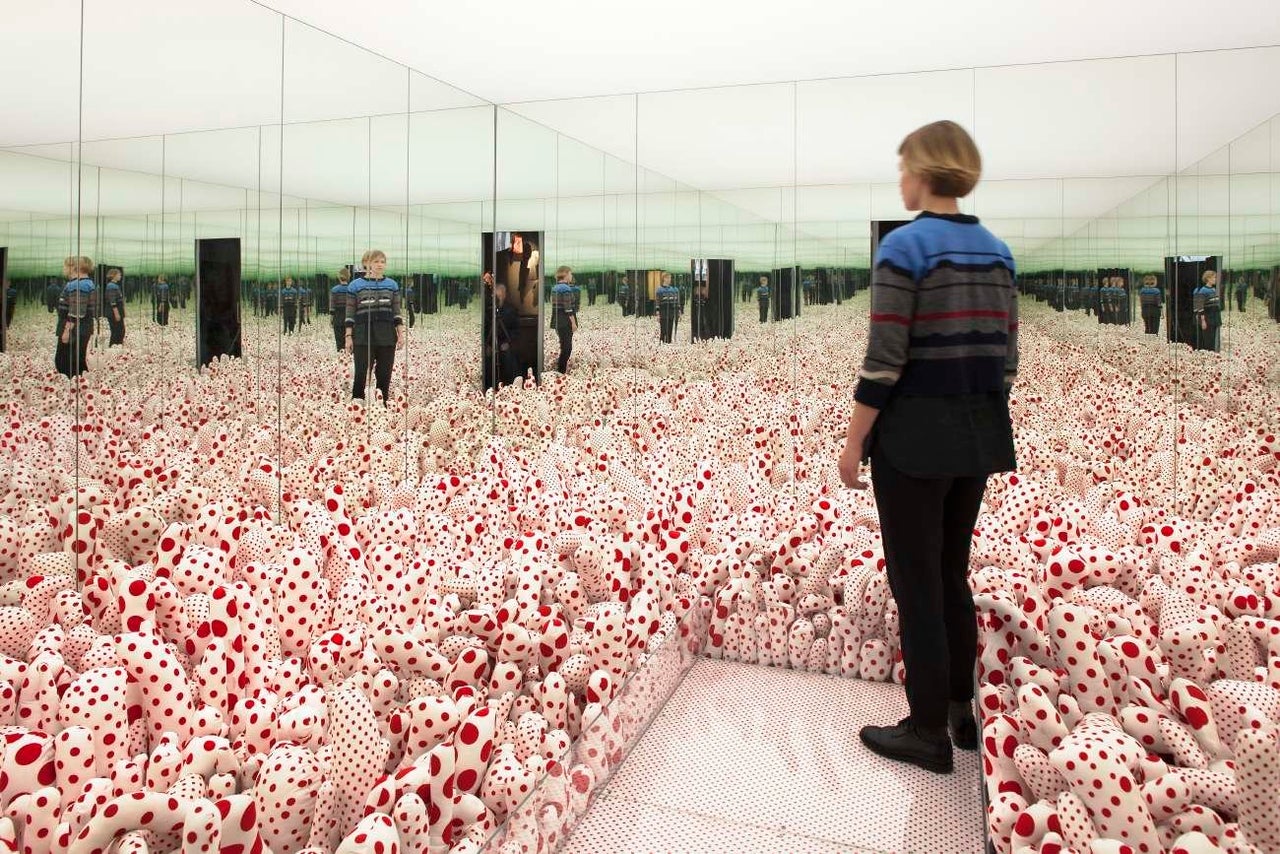
And then there is the social aspect of the #artselfie, which, in a way, exists to be shared. This too, falls in line with Kusama's artistic aims. "Polka dots can't stay alone," she told an interviewer in the 1960s. "We become part of the unity of our environments." We too, like the polka dots, love to share.
"Polka dots symbolize disease," Kusama said in an interview with BOMB; like a virus, the dots spread over everything in their midst. The notion of Internet virality, then, logically follows, with images of polka-dotted selfies spreading like polka dots themselves over the infinite expanse of the internet. There's really no use for a single selfie. Even in the backlog of an iPhone they usually exist in clusters, with perhaps one gem amongst the stream of attempts, the best of which may make it to social media where it can truly spread its wings.
"If there's a cat, I obliterate it by putting polka dot stickers on it," Kusama told Index Magazine in 1996. "I obliterate a horse by putting polka dot stickers on it. And I obliterated myself by putting the same polka dot stickers on myself." In her aptly titled "The Obliteration Room," Kusama invites participants to join in, placing rainbow stickers all over a pristine white room until the sterile space is swarming with rainbow spots, a surreal case of the chicken pox. Put a sticker on your face and you too become part of the infected space. Take a selfie, upload it, and watch the image spread through screens and feeds like a hungry polka dot itself.
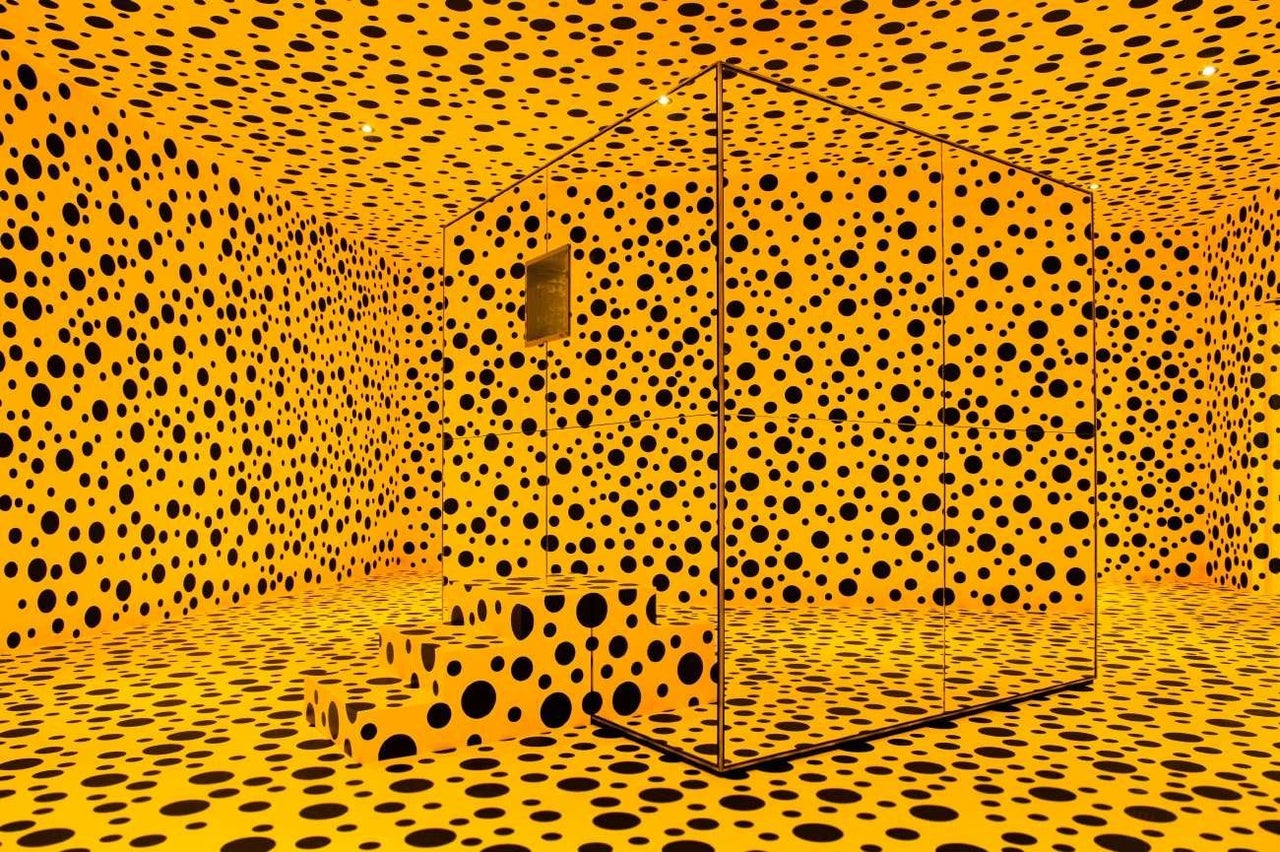
There are undoubtedly places where taking selfies is not appropriate -- funerals, classrooms, driver's seats, to name a few. But to anyone who puts Kusama's installations on the list, I'd have to disagree. Snapping a selfie in one of Kusama's contained wonderlands contributes to the senses of disorientation and proliferation her work hopes to achieve -- that dissolution of boundaries that turns viewer into participant into aesthetic element and back again.
Thanks to Kusama, today, many museums suggest a hashtag to include when documenting your visit. Mirrors are a constant trend at international art fairs. Kara Walker expected viewers to snap lewd and offensive photos with her massive sugar sculpture "A Subtlety." Some installations, like the "Rain Room" for instance, seem to exist solely as a set for a dramatic profile picture. Not every artwork promises a selfie as stimulating and multifaceted an experience as Kusama's. In fact, few will.
Until January 24, 2016, the Louisiana Museum of Modern Art will exhibit six decades of work from the prolific and influential artist. The retrospective is filled with paintings, sculptures and environments orbiting around the notion of self-obliteration through endless repetition.
Enter a mirrored space and watch as your body is refracted and reflected into pure image, able to exist everywhere at once and thus no single place at all. Feel like Kusama in her jumpsuit, stretching out amongst her haunted kingdom and getting lost within it. Feel like an animal suddenly in camouflage. Feel like a polka dot. Capture this peculiar state, with the vision of you plastered on each and every wall. Share it. Spread it. Let the image replace you, obliterate you. Hopefully, in the process, you'll get a lot of likes.
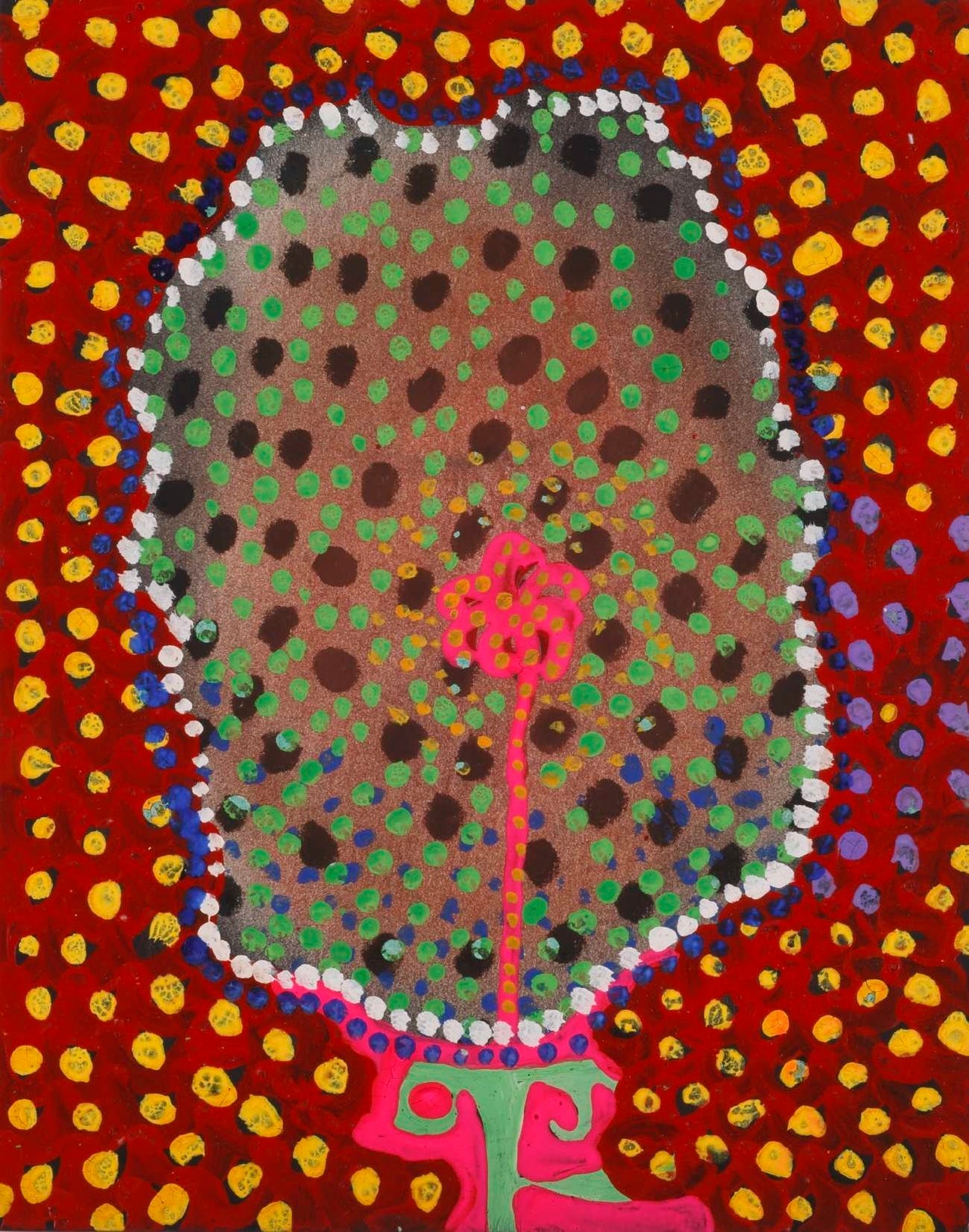
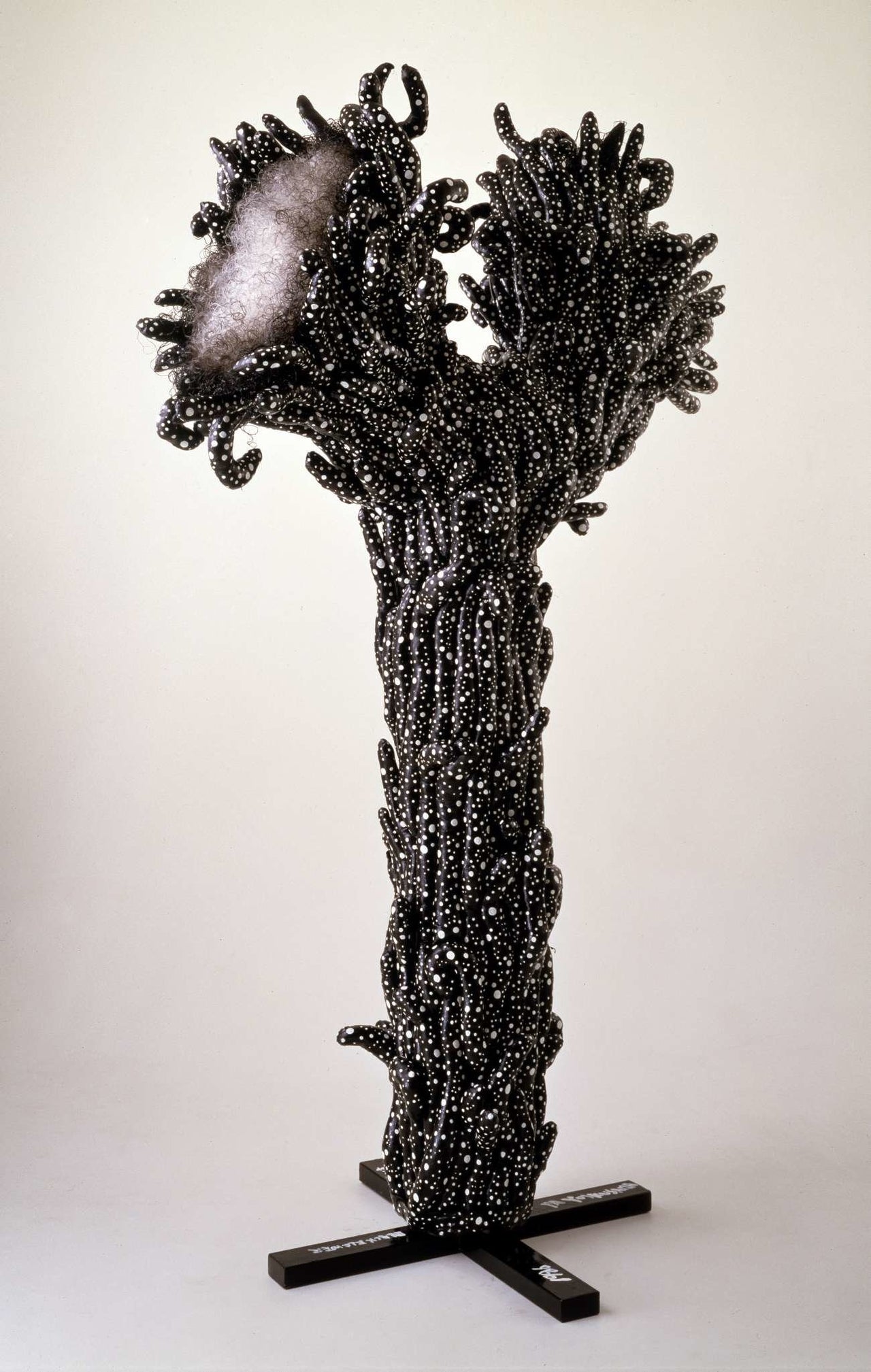
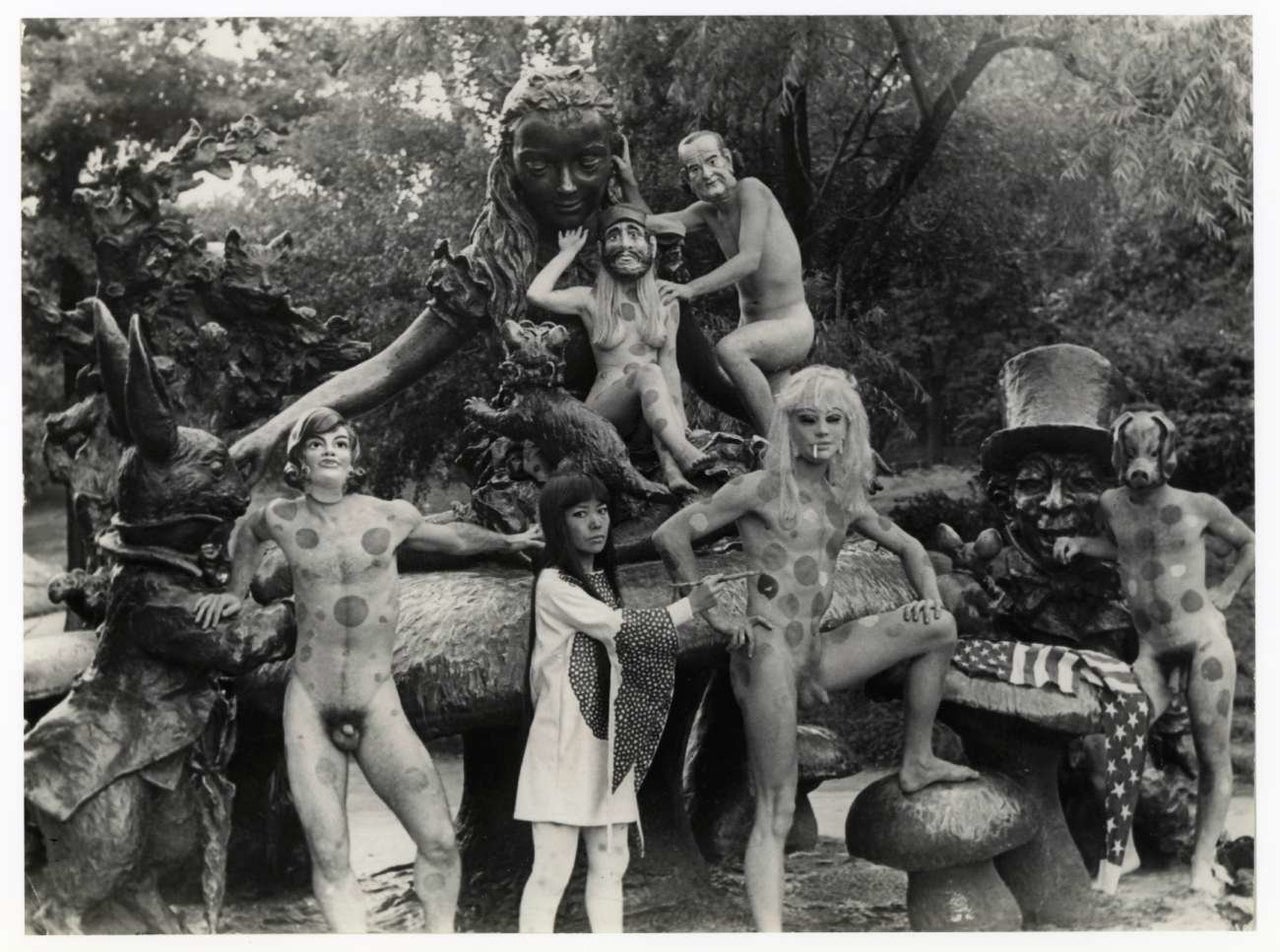
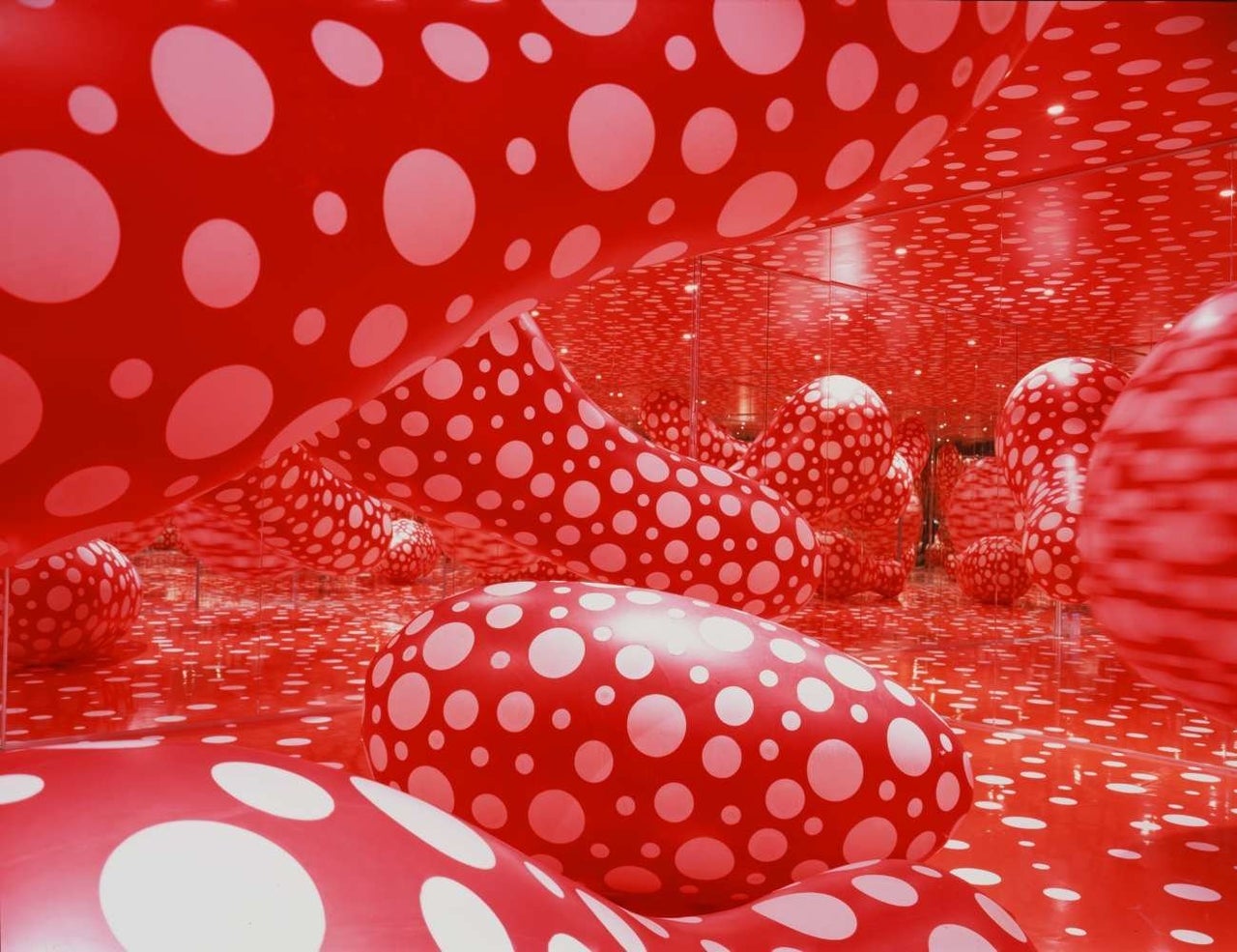
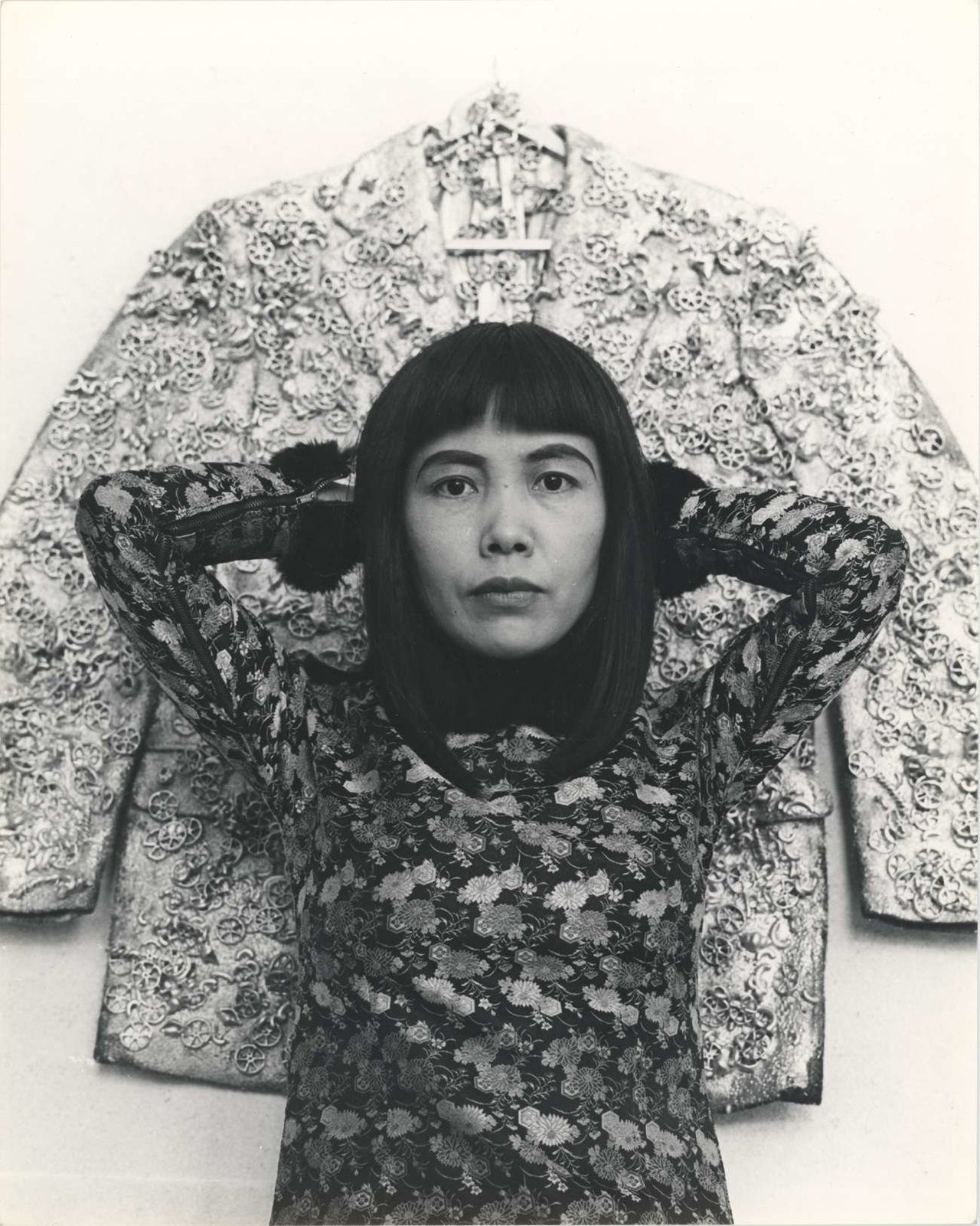


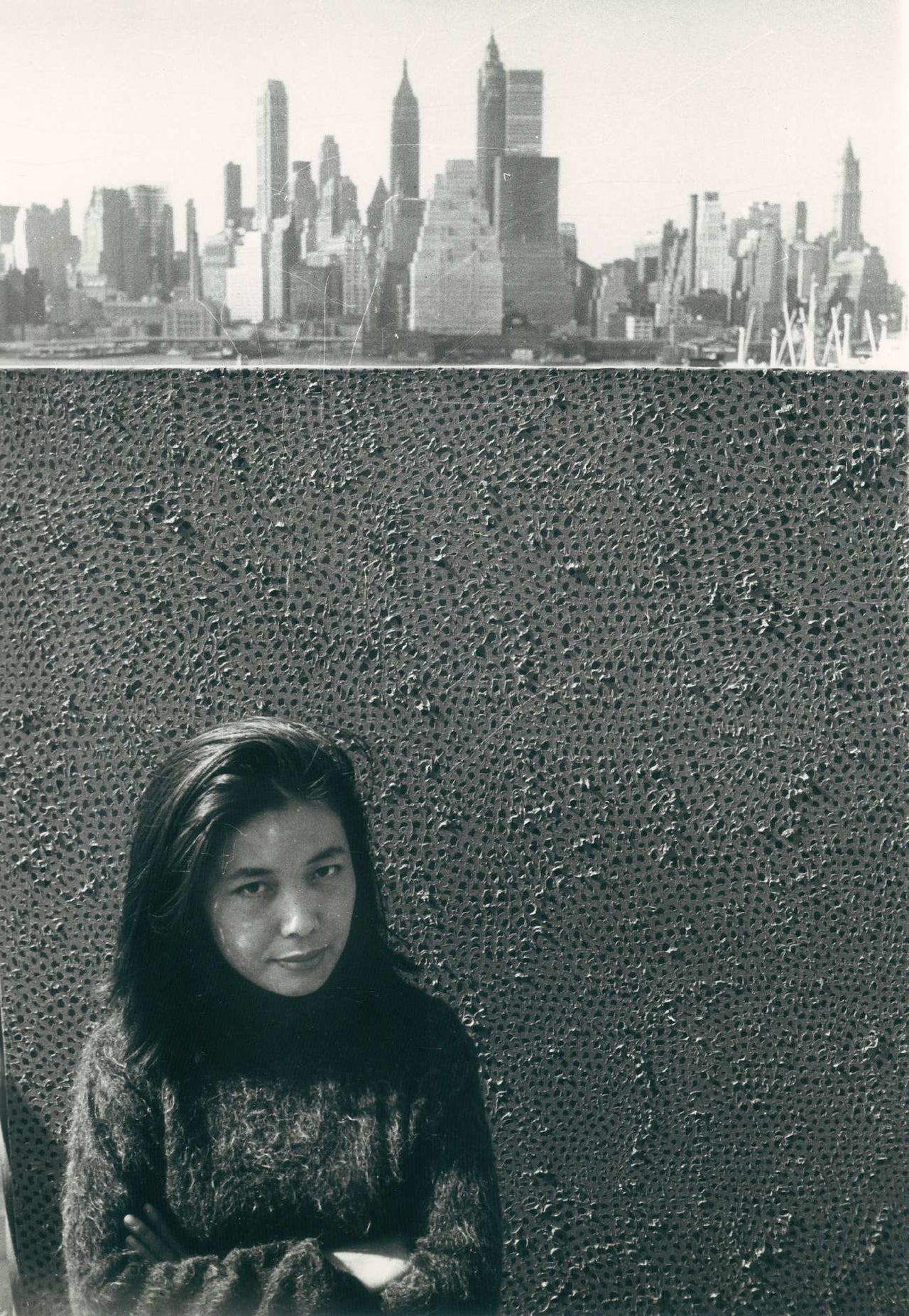
Also on HuffPost:

